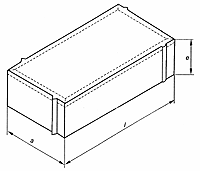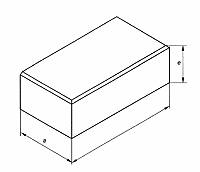


| · | |
| · | Advantages of paving with ceramic paving stones |
| Home | Contact us | Legal | |||||||||
Description of paving stonesShape As shown in figure 1 and 2, they can be bevelled in one or several of their facing edges (forming the facing surface). PFor flexible paving, paving stones can be supplied with spacer lugs on one or more sides, which will always be in the vertical position when used.
For rigid paving, paving stones should not have spacer lugs, they should be rectangular or another shape to enable them to be placed in combination with others, separated by a 10 mm mortar joint.
Nominal dimensions For rigid paving, the thickness of the part should not be less than 30 mm. If the part is bevelled on one or several facing edges measuring over 7mm in width or depth, the manufacturer should inform this. This limitation in the size of the bevel avoids joints that are too wide to be formed. Dimensional tolerances
Table 1. Dimensional range.
Note: The collection of samples and the procedure to determine the dimensions are described in appendix A and B respectively of standard UNE EN 1344:2002. Aspect Their colours remain permanent over time, and they can be placed in a variety of ways. In some cases the surface to be treated does not have to be the final surface, parts can be easily replaced and therefore it is possible to completely change the appearance of the surroundings. |
|||||||||
 | |||||||||


